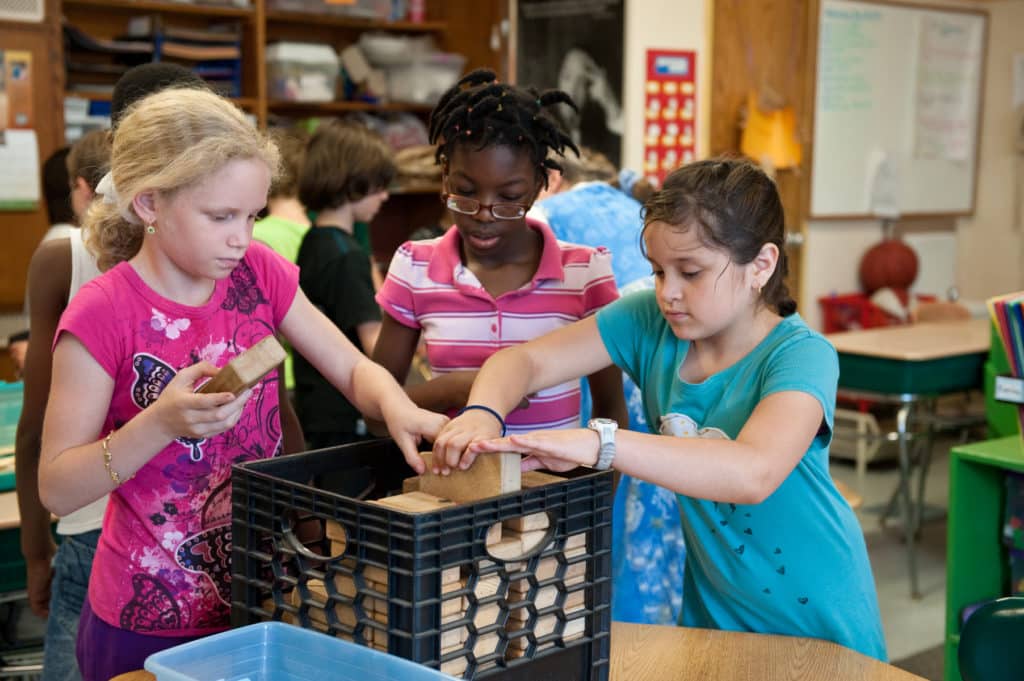I often hear teachers tell students, “Don’t worry about who’s first—we’re all going to the same place (or “going to do the same thing”), so it doesn’t matter who’s first.” This reasoning wouldn’t work for me as I waited in line to board an airplane, buy things at the store, or get my driver’s license. It won’t convince many children, either.
So to help keep things orderly and fair in your classroom, think through how you’ll handle who goes first when lining up, leading the line, getting or giving out supplies, etc. It doesn’t really matter which method you use, as long as you don’t leave it to the children to decide.
A Few Ideas
- Table groups. Make sure to rotate through the groups!
- Categories. “If you have blue on, line up.” “Everyone who has a dog, come to the meeting circle.” A benefit of this method is that choosing useful categories requires that you observe and get to know your students!
- Numbers. In the morning, have students count off by threes or fours. Then, whenever you need to choose “who goes first,” use the numbered groups: “All the fours, you may line up first. Threes, you may line up now.”
- Names poster. Make a poster of all your students’ names. When it’s time for the next “who’s first?” or “who gets to do it?” decision, simply move down the list: “Mary’s next on the list. She’ll lead the line today.”
- Random name drawing. Make a name card for each student. Keep the names in a can or basket and draw names as needed: “Let’s see, who’s going to help pass out paper? Laticia and Jarrod, your cards came up!” Their cards then go into the “Had a turn” can or basket.
- “Person of the day.” Tell students you’ll designate a “person of the day” by rotating through the class roster. Each day, a different student gets to be first to line up, pick recess equipment, etc.
Read More
Practical, “use-it-tomorrow” tips drawn from our books in the What Every Teacher Needs to Know series!, What Every 2nd Grade Teacher Needs to Know and What Every 4th Grade Teacher Needs to Know.
Margaret Berry Wilson is the author of several books, including: The Language of Learning, Doing Science in Morning Meeting (co-authored with Lara Webb), Interactive Modeling, and Teasing, Tattling, Defiance & More.
